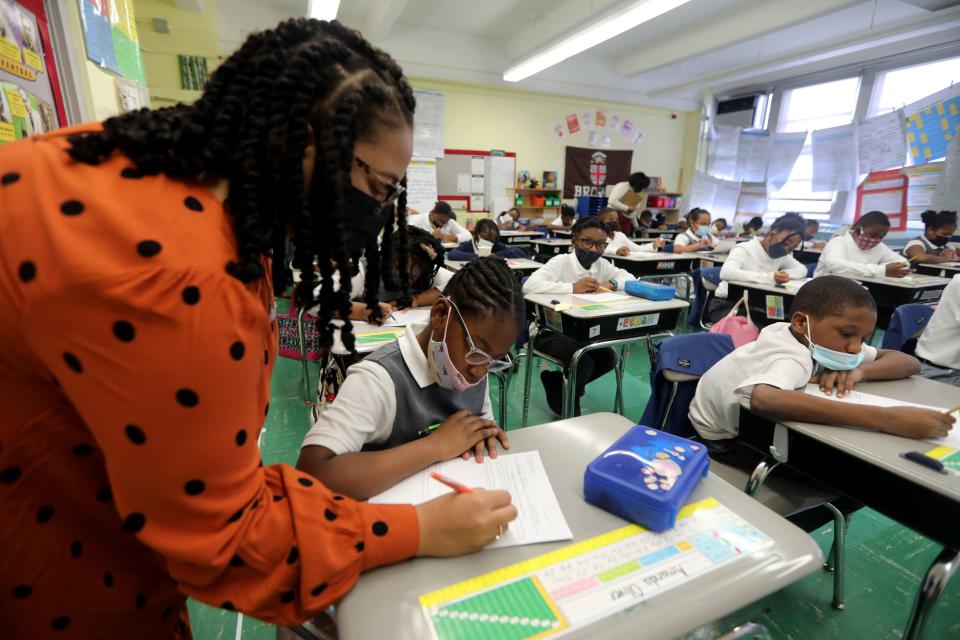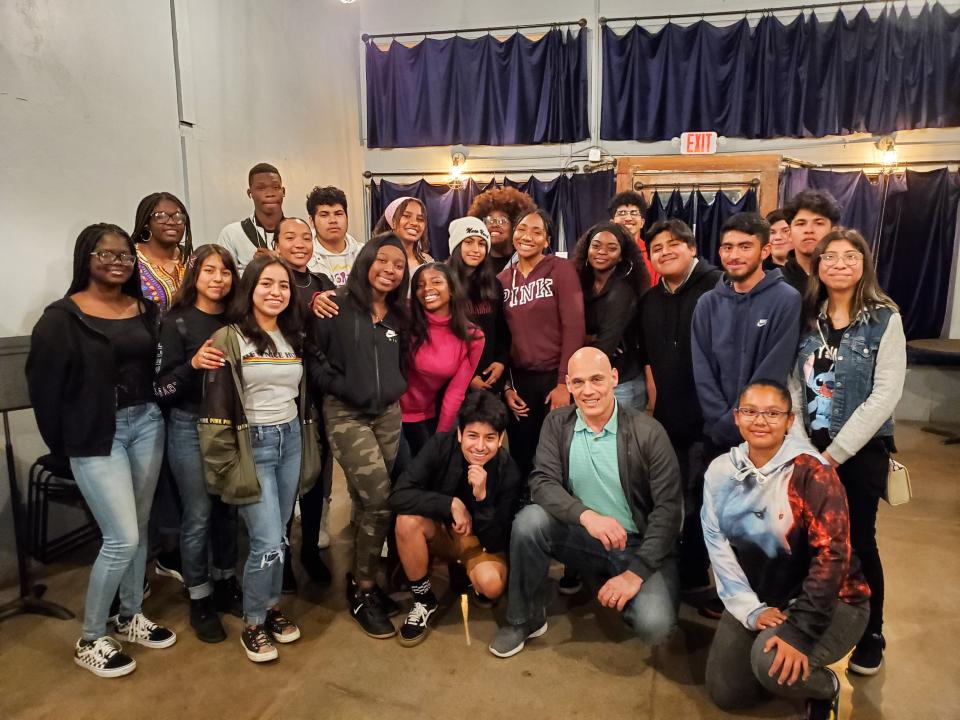School choice advocates promised students a better education. They haven't delivered.
It’s an old idea: Give families a choice in where their children attend school and students will receive a better education. Not all schools are a good fit for all kids and some schools aren’t good for anyone. Free market logic says competition and choice will fix things.
In practice, however, school choice hasn't been the fix that proponents promised, although its application is varied.
Many school districts offer magnet schools and other alternatives to neighborhood schools that link enrollment to students' home addresses. Open enrollment policies allow students to attend any school in their home district, and interdistrict permits allow students from outside the district to enroll in the school of their choice. These policies help reduce, although don't eliminate, the economic segregation that plagues many cities.
Charter schools have mixed success
Charter schools, another form of educational choice, use tax dollars to create even more alternatives. The concept originated as a way for experienced teachers to extricate from the often ill-conceived and capricious mandates of school boards and superintendents, but the majority of charter schools are run by organizations with the same kinds of hierarchical leadership as traditional public schools. Some have succeeded at providing high-quality alternatives, but many have not.
Opinions in your inbox: Get exclusive access to our columnists and the best of our columns every day
In perhaps its most extreme form, school choice means allowing families to use their tax dollars to pay tuition for a private school. Voucher programs are available, to varying degrees, in most states.
Although there is much political enthusiasm for them, less than 1% of America's 50 million K-12 students use vouchers, and there is little more than anecdotal evidence supporting their effectiveness in improving student achievement.
Underlying the school choice debate are two conflicting ideals: Equal opportunity for all children to a good-quality education versus the desire of some people for their children to not attend school with certain other children.

The ideas of school choice are rooted in the long and still lingering history of educational segregation, and that ought to keep us suspicious of choice-centered policies. Even so, parents who seek out better educational opportunities for their children are not necessarily trying to keep their kids away from students of color. In fact, charter schools serve a higher percentage of children of color than traditional public schools do.
US Education secretary: COVID-19 hurt student academic achievements, but we can recover
The high school at which I teach has become a school of choice, an alternative to inferior and sometimes perilous inner-city neighborhood high schools. And as with most such schools – alternative schools, magnet schools and many charters – there are not nearly enough seats to meet the demand.
In the community where I teach, neighborhood schools are shrinking – some with enrollments barely 20% of what they once were. In capitalist language, the marketplace has spoken, but what remains on those campuses are a lot of kids without parents or without parents who have the wherewithal to find their children an alternative, or they lack the means to transport them to a school more than a few blocks away.
Disadvantaged students are left behind
Also left behind are students whom the desired schools don’t much want on their campuses (because schools are generally not interested in reluctant learners or kids with serious challenges). Teaching positions at those shrinking neighborhood schools go unfilled longer than elsewhere, and a high turnover of administrators and an often-corrosive environment prevent the strongest teachers from wanting to work at them.
Thus, the quality of education almost inevitably erodes for students who ought to have access to the best teachers and support systems.
Chrissy Teigen's Q&A with Feeding America: How can we help children who are going hungry?
An education system that doesn’t prioritize its most disadvantaged and challenged students cannot meaningfully claim success. Allowing middle-class and even wealthy families to use tax dollars to pay private school tuition exacerbates that failure.
What if school choice meant that the most disadvantaged children could attend school anywhere, even outside the city or district limits? Imagine if instead of arresting an impoverished mother for fudging her address to give her kid a chance, she could legally access the best public schools regardless of her residence?
Some states allow such transfers, but many school districts have been slow to allow students who live outside their boundaries to enroll.
Give students themselves more choice
I am glad for the choices that students and their parents have, and I am for more choice, but let’s start with choices inside each school. I mean giving students more agency over their own education.
The K-12 system seems – with not nearly enough exceptions – to do everything in its power to crush the natural curiosity of children along with their urgent impulse to learn.
Opinion alerts: Get columns from your favorite columnists + expert analysis on top issues, delivered straight to your device through the USA TODAY app. Don't have the app? Download it for free from your app store.
Journalist and author Ta-Nehisi Coates expressed this perfectly in the opening of "Between the World & Me": “I was made for the library, not the classroom. The classroom was a jail of other people’s interests; the library was open, unending, free.”
It was tragic for him and for those who can relate, considering we all are or have been consigned to 13 years of narrowly defined and all-too-often uninspired education.
As a teacher I have tried to make it different for my students – to let their interests, attitudes and sensibilities steer the class and to find their own way to enlightenment and their own voice in writing. I’ve encouraged them to disagree with me and push back against the tyranny of my curriculum. Let them constructively take over the class or, if necessary, make them take it over.

Mostly the students I teach are more resistant to my offer of intellectual freedom than anything else. They’ve been conditioned to be compliant or to not care at all, determined to learn what will please me and get a good grade or what will sabotage what has alienated them. Few kids value their education beyond the grades that will get them into a good college – if they value it at all – but they can learn. They do. It’s a matter of trust. I in them; them in me; all of us in ourselves. Trust and patience and faith in that curiosity and hunger to learn with which all of us start out.
If we all did a better job of that – if we committed ourselves to mining for the gold of student curiosity and intellectual hunger – then there might, ultimately, no longer be any schools that parents and students would wish to avoid.
If we could get students to value learning and indulge their natural curiosities, then we might also discover that children want to attend school with other children who are not like them, learn about other people and discover how much of our humanity we share.
Larry Strauss has been a high school English teacher in South Los Angeles since 1992. He is a member of USA TODAY's Board of Contributors and the author of more than a dozen books, including "Students First and Other Lies: Straight Talk From a Veteran Teacher" and his new novel, "Light Man." Follow him on Twitter: @LarryStrauss
More from Larry Strauss:
I've taught in South Los Angeles for 30 years. The forces that drive violence are complex.
Florida's 'don't say gay' law and other restrictions hurt kids and drive away teachers.
I'm not paid for all the time I spend teaching. It's pathetic my generation is OK with this scam.
You can read diverse opinions from our Board of Contributors and other writers on the Opinion front page, on Twitter @usatodayopinion and in our daily Opinion newsletter. To respond to a column, submit a comment to letters@usatoday.com.
This article originally appeared on USA TODAY: Charters aren't giving students the education school choice promised

